
Best Solution for back pain treatment
The low back, also called the lumbar region, is the area of the back that starts below the ribcage. Almost everyone has low back pain at some point in life. The muscles of the spine are strengthened by the deep small muscles Transversus Abdominus and Multifidus muscles. These muscles are two small muscles that produce primary stiffness. The main function of these small muscles is to anticipate the movement of other muscles. This is called “feed forward mechanism”. Usually these muscles are activated before any other body muscles to stabilize the spine. In patients suffering from back pain, the muscles do not function properly. This change is due to various reasons including atrophy, lower number of capillaries, increased connective tissue and fat, and change in spindle function When using the QRS Pelvi center Therapy System its magnetic stimulation penetrates deep into the human body and moves, trains and stimulates these deep small muscles that the patient cannot move or train on their own. So the spindles work properly and the muscles function properly. Hence pain relief in back pain patients
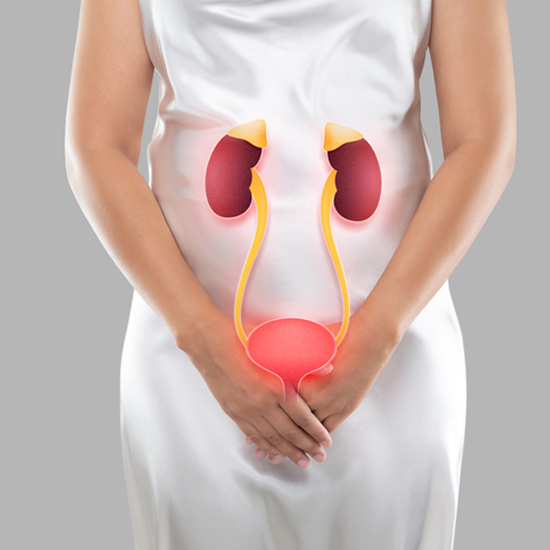
Urinary Incontinence
It is a condition in which a person cannot control urination when they do not want to. It occurs when the normal ability to store and pass urine is disrupted. The bladder is a hollow organ that is part of the urinary system. It also includes the kidneys, bladder, and urethra. During urination, the bladder muscles tighten to move urine into the tube-shaped urethra. At the same time the muscles around the urethra relax and the urine leaves the body. When the muscles in and around the bladder don't work as they should, urine leaks and passes out when the person doesn't want to. The brain and bladder control the function of urine. Bladder stores urine. The pelvic floor muscles hold the bladder in place. Normally, the smooth muscles of the bladder are relaxed. It keeps urine in the bladder. The sphincter muscle closes around the urethra. The urethra is the tube that carries urine out of the body. When the sphincter muscles close the urethra, urine does not flow When it is ready to urinate, the brain sends a signal to the bladder. Then the bladder muscles contract. It carries urine out of the body through the urethra, the tube that carries urine. The sphincters open when the bladder contracts. This is what usually happens. It usually consists of several things

Erectile Dysfunction
Erectile dysfunction is the inability to get and keep an erection firm enough for sex.Having erection trouble from time to time isn't necessarily a cause for concern. If erectile dysfunction is an ongoing issue, however, it can cause stress, affect your self-confidence and contribute to relationship problems. Erectile dysfunction can be caused by a combination of various factors including psychological, hormonal, neurologic or vascular. Key risk areas include lifestyle factors. Certain diseases (ie, Cardiovascular, diabetes, mellitus, Parkinson) side effects of prescription drugs (ie, antichilinergic) and hormonal factors. Normal penile erection (for the men ) and normal sexual activity for the female requires coordinated involvement of the Intact central and peripheral nervous system The bulbospongiosus, ischiocavernousus and pubococcygeus muscles. The QRS pelvi center works in all these areas. It activates the afferent fibers within the pudendal nerve. The pudendal nerve is of key importance to normal sexual activity , both with men and women. In addition QRS pelvi center results in a sharp improvement of the tone of the relevant muscles and has a strong positive effect on blood flow (Amongst others via Nitric Oxide)
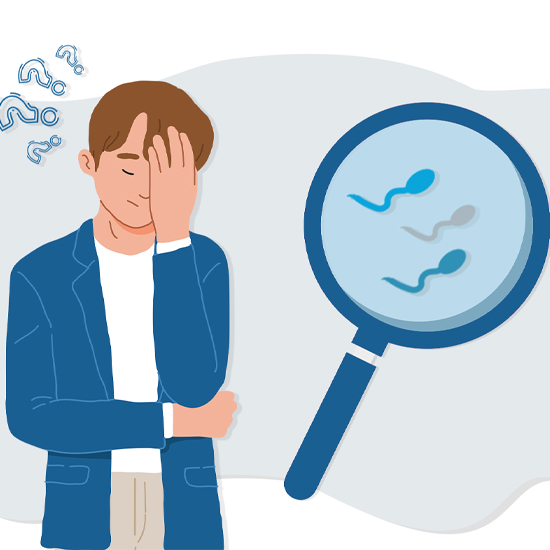
Improve potency and libido
Male Potency is the ability of a male to perform sexual intercourse, that is, to maintain an erection and achieve ejaculation.Libido, which means sex drive or the desire for sex, varies dramatically from one person to the next. It also varies depending on a person's preferences and life circumstances. Libido can be affected by medical conditions, hormone levels, medications, lifestyle and relationship problems.

Premature Ejaculation
Premature ejaculation is a condition when a person ejaculates without control before or shortly after penetration during sexual intercourse. It is accompanied by a minimal amount of sexual stimulation and a person does not really wish to ejaculate that quickly. The result is deriving unsatisfactory amounts of pleasure from the sexual act for both of the partners.

Rehabilitation after Child birth
Women should also be aware of the more serious complications that can happen in the 6-week period after giving birth, also known as the postpartum period.Post- delivery complications shouldn’t be ignored.Urinary incontinence immediately after birth is more common than you may think. And it’s not dangerous — but this complication can cause discomfort, embarrassment, and inconvenience. Vaginal delivery is an important cause of stress urinary and fecal incontinence and pelvic organ prolapsed. In addition, the sexual function/quality of vaginal climax is often affected. The QRS pelvi center treatment can assist in quickly restoring the tone of the relevant muscles. The treatments can start soon after having given birth

Vaginal Looseness
The pelvic floor muscles surround the vagina. These may weaken over time, which can cause a feeling of looseness in the vagina.
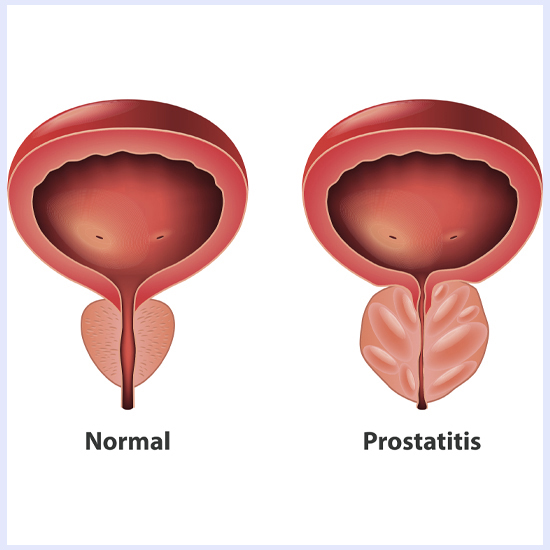
Prostatitis
Prostatitis is a painful condition in which the prostate is inflamed, swollen, and tender. It can be caused by a bacterial infection or just simply be inflamed.
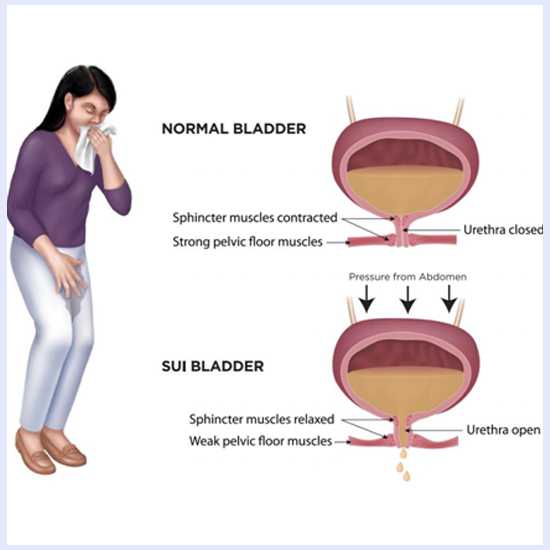
Stress incontinence therapy
Stress incontinence is urine leakage associated with increased abdominal pressure from laughing, sneezing, coughing, climbing stairs, or other physical stressors on the abdominal cavity and, thus, the bladder.

Rehabilitation after prostatectomy
Urinary incontinence and erectile dysfunction are the most common side effects of a prostrate surgery. Prostatectomy results in a high incidence of Urinary incontinence and Erectile dysfunction. Prostate removal often results in damaging soft muscle tissue and pudendal and cavernosal vessels . After prostatectomy the external sphincter becomes primarily responsible for ensuring continence. The treatment of significant sphincteric incompetence is often surgical by means of the placement of an artificial urinary sphincter The QRS pelvi center therapy , QRS international has treated many patients suffering from incontinence after Prostatectomy. The QRS pelvi center treatment results in rehabilitation of the strength of the sphincter and pelvic floor muscles. Already after a few treatments do the patients notice significant improvements.
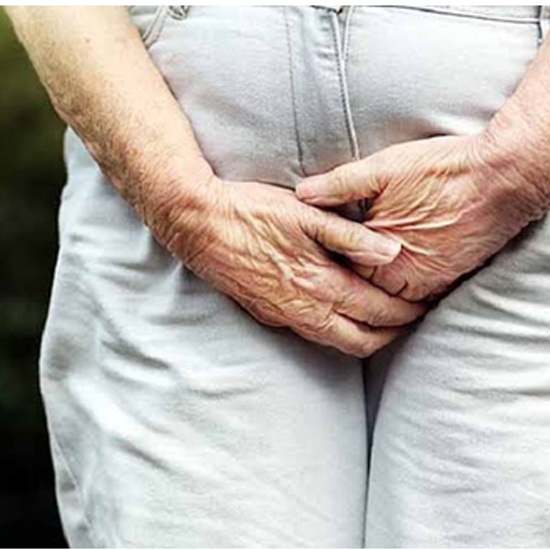
A Conservative continence treatment for the elderly
Conservative treatments, which do not involve medicines or surgery, are tried first. These includelifestyle changes, pelvic floor muscle training (Kegel exercises), bladder training, etc. Urinary incontinence is one of the key problems of the elderly and affects every aspects of an elderly person’s life. One of the aspects of UI is the self imposed social isolation because of constant fear f incontinence in public , ultimately resulting in loss of self esteem. The economic costs of urinary incontinence to the individual and to society are enormous but the personal loss to the individual is by far the worst. Unfortunately, since urinary incontinence in the elderly is not a fatal disease, many people think it is part of the aging process. The QRS pelvi center offers a conservative treatment for the elderly in treating urinary incontinence. There is no need to implant electrodes. Only limited participation by the patient is required, as compared to active pelvic muscle exercises. OQRS Pelvi center reaches the same improvements with Urge incontinence as a conventional drug therapy but without the negative side effects.

For the general well beingor as a preventative therapy
QRS-Pelvicenterdoes automated training of muscles. Most men after the age of 30, start losing 1% of muscle mass every year and for women after menopause it is even up to 2%. Most people like to go to the gym and train their biceps and other visible muscles. Only a few might think of the biggest muscle group of human body, the pelvic floor muscles. Especially men have no idea of where pelvic floor muscles are located, what are their functions and how to train them. So once those muscle strengthdecrease,they get all kind of problems including urinary incontinence, spinal instability, sexual dysfunction, etc. So, it is always better to use QRS-Pelvicenterfor preventative training, especially for pre-menopausal women.

Urge incontinence & Bladder over activity
Urge incontinence means you have an urgent desire to pass urine and sometimes urine leaks before you have time to get to the toilet.Overactive bladder is a condition in which the bladder squeezes urine out at the wrong time. You may have overactive bladder if you have two or more of these symptoms:
- You urinate eight or more times a day or two or more times at night
- You have the sudden, strong need to urinate immediately
- You leak urine after a sudden, strong urge to urinate
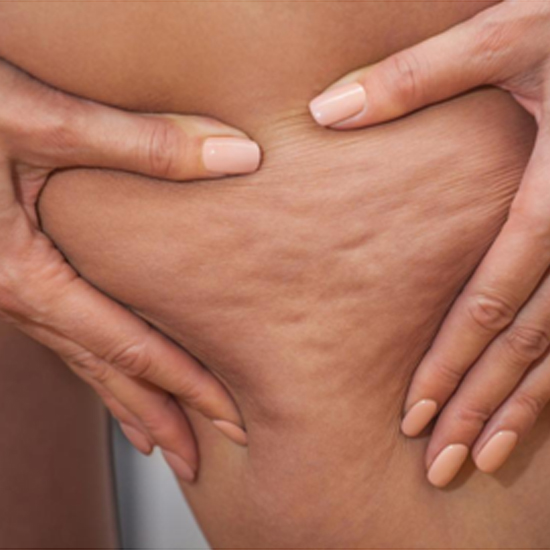
Cellulite treatment
Cellulite is collections of fat that push against the connective tissue beneath your skin. It often appears on your thighs, stomach and butt (buttocks). Cellulite makes the surface of your skin look lumpy and puckered, or appear dimpled.
Urge incontinence
A sudden, intense urge to urinate, followed by an involuntary loss of urine due to a minor condition, such as an infection, or a serious condition, such as a neurological disorder or diabetes.
Overflow incontinence
Overflow incontinence means that have the urge to urinate but can release only a small amount. This can be due to a weak bladder muscle or to blockage. Since the bladder doesn't empty as it should, it gets too full. It then leaks urine later, even though the feel no urge to urinate. Overflow incontinence occurs when the muscles of the bladder are not able to squeeze properly to empty the bladder
Urge incontinence & Bladder Over activity
QRS pelvi center therapy leads to a suppression of involuntary detrusor activity while increasing bladder capacity and compliance This is realized by various effects on neurological pathways including pelvic floor afferents, autonomic, efferents and somatic motor fibers The QRS pelvi center therapy for Bladder Over activity uses low frequency, rhythmic magnetic pulses . These reduce the overactive sensory triggers from the bladder. And also ensure inhibition of reflexes and impulses coming from the central nervous system reacting on these overactive impulses
Functional incontinence
Functional incontinence means that you can't get to or use a toilet in time to urinate. The magnetic intensity in the Pelvi center therapy system stimulates the pelvic floor muscles. Thousands of contractions and stimulations take place in each session. This leads to regaining control of the pelvic floor muscles and bladder Improved function and coordination and increased strength (hypertrophy) between the muscles of the pelvic floor. QRS Pelvic Center trains and strengthens the external sphincter muscles and pelvic floor muscles. This ensures that the pelvic floor muscles can better respond to sudden increases in intra-abdominal pressure. and improves resting bladder closure pressure (The pelvic floor acts as a type of Hammock and single functional unit. If a part of the structure is weakened then the hammock has lost some of its orginal functional and cannot perform efficiency. As a result of stretching of the fascia and ligaments, the urinary and reproductive organs prolapsed. The pelvic floor muscles can no longer push the urethra against the public bone resulting in incontinence (DeLancey/Petros & Ulmsten) With growing age, the strength of the muscles of the external sphincter deteriorates, about 2% per year. The effect is greater with women after having birth or after muscles and nerves have been damaged because of surgery Magnetic stimulation of peripheral nerves provoke muscle contractions and facilitate the stimulation of autonomic and somatic nerve pathways in the pelvic floor. Motor evoked potentials are triggered in the pelvic sphincter muscles The Pelvi center helps the patient to learn how to use certain muscles, resulting in improved function and coordination between the muscles of the Pelvic Floor and increased strength (hypertrophy) . The QRS pelvi center trains and strengthens both the external sphincter muscle and the muscles of the pelvic floor. Thereby it ensures that the pelvic floor muscles are able to respond better to a sudden increase in intra abdominal pressure. And also ensures improving of the resting urethral closure pressure)